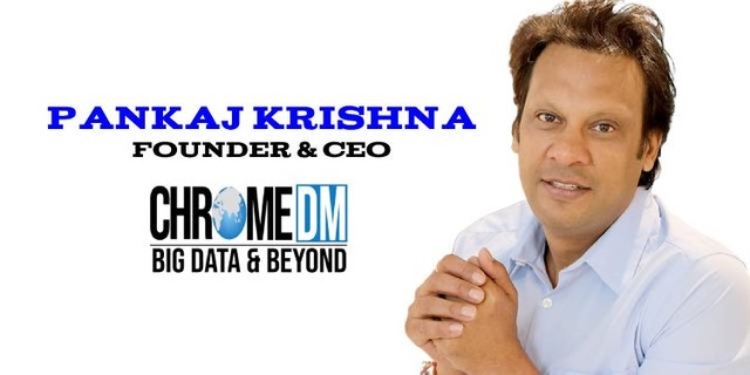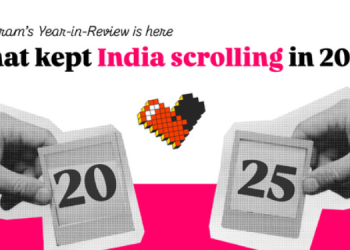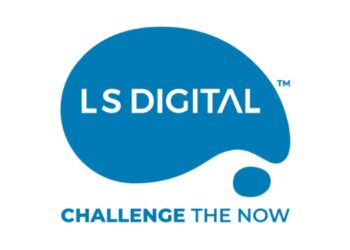Chrome Data Analytics and Media is a technology-driven market research firm with a Pan-India on-ground presence. The analytics firm consolidates TV connectivity reports across all modes of delivery- Analog, Digital and DTH from 3300+ Cites and 5,97,000 Villages. Chrome DM has worked for over 500 Channels in the Broadcast Industry including the big four: STAR, Zee, and Sony & Viacom. Chrome DM is a member of MRSI and ISO certified. As of September 2022, the organisation employs 650+ field staff, 150+ managerial staff and 450+ tele-callers speaking over 22 languages to gather data from around the country.
The company recently launched COTT, which it says is India’s first digital measurement PaaS to analyse viewer’s consumption and behavior towards OTT platforms where it offers an overview of top platforms, genres, shows, artists, and binged content. Chrome DM also runs a Consumer Research (CR) division which has worked towards consumer research for brands from across the automobile to cement sector. The company has also recently launched Chrome Digital Track which aims to report important metrics in the publisher’s online presence and engagement across various digital platforms and devices. The Report would include social media, native websites, native apps, live streaming, connected TV and other digital channels.
Medianews4U.com caught up with founder, CEO Pankaj Krishna to find out more on the company’s plans and get his views on the television and content creation landscape.
With more than 20 years of experience in the media industry, he is an industry veteran, has held various roles. He completed his O levels from the University of London and finished an Executive Education Programme from Harvard Business School. Although he began his entrepreneurial journey in 2008, he learned the intricacies of the media industry by working with some of the top brands in the business such as India Today, National Geographic, and Star India. He later became the Business Head of UTV India.
Excerpts:
How is Chrome building on products like COTT?
At Chrome DM, we are constantly innovating with products like COTT (Chrome OTT) to offer cutting-edge solutions in the dynamic media landscape. COTT provides comprehensive insights into streaming content performance, aiding content creators, distributors, and stakeholders in making informed decisions.
We are dedicated to enhancing COTT with advanced data analytics, improved user interfaces, and expanded coverage to capture emerging OTT trends. Our focus on research and development ensures we introduce features addressing evolving industry needs. We aim to empower clients with actionable insights from COTT to optimize content strategies, engage audiences, and drive business growth in the digital arena.
COTT for Business (CFB) is India’s first digital analytical tool that offers a complete overview of the evolving consumption trends toward OTT platforms. It gives you an in-depth analysis of viewers’ consumption dissected by demographics, genre, duration, and content in both percentages as well as absolutes. Industry’s first digital measurement PaaS that covers top platforms, top shows, top genres, and top binged content across the total internet usage in India. The software is developed via a proprietary method for data capture, where the technology is produced on a hybrid stack of PHP, Python, MySQL and Java. CFB allows the selection/deselection of platforms, shows, and actors’ trend lines across various platforms and different market cuts.
What is the strategy going to be this year to grow your client list among broadcasters and agencies?
Our strategy this year focuses on three pillars: innovation, collaboration, and client-centricity. Firstly, we are enhancing our products and services through R&D to meet evolving needs. Secondly, we are fostering partnerships with stakeholders to co-create value. Lastly, we prioritize understanding each client’s unique goals to deliver personalized solutions and drive long-term partnerships.
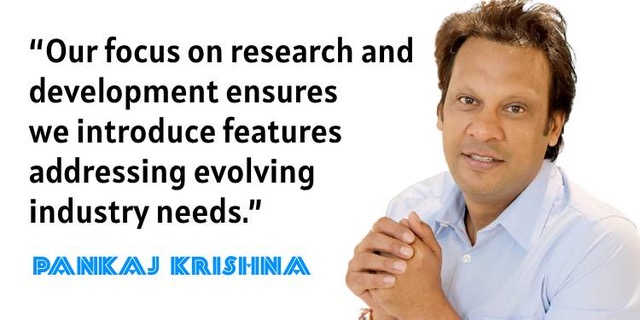 When you talk to clients what are their major concerns and requirements?
When you talk to clients what are their major concerns and requirements?
Clients’ concerns and requirements typically center around key areas:
They seek robust analytics to optimise content and engagement strategies and aim to maximise revenue through innovative models. Enhancing relevance and quality to retain audiences is a priority. Adherence to data protection standards is crucial for maintaining trust and staying ahead with innovative solutions remains a priority.
Lack of cross measurement is an industry issue. What should be the way forward?
Addressing the industry’s lack of cross-measurement is vital for understanding audience behavior and media consumption comprehensively. Collaboration, standardisation, and innovation are key to developing robust solutions. Steps include stakeholder collaboration, standardizing metrics, integrating data sources, investing in advanced technology, and ensuring transparency.
Is content piracy another issue?
Content piracy remains a significant challenge in the media and entertainment sector, impacting creators, distributors, and consumers. To combat piracy effectively, a multifaceted approach is necessary: strengthening enforcement measures, leveraging technology for content protection, raising consumer awareness, fostering partnerships, and exploring innovative distribution models. Collaborative efforts are key to addressing this complex issue.
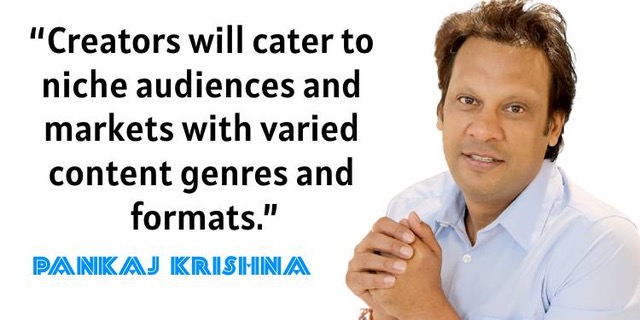 What are going to be the key themes this year when it comes to content creation and consumption?
What are going to be the key themes this year when it comes to content creation and consumption?
This year, expect these key themes to shape content creation and consumption:
Creators will cater to niche audiences and markets with varied content genres and formats. Enhanced user engagement through data-driven strategies like tailored recommendations and interactive experiences. Convergence of linear TV and digital platforms for flexible content distribution and monetization. Rising focus on ethical and socially conscious storytelling, reflecting societal values. AR, VR, and immersive media technologies driving innovative storytelling and engagement.
Oversaturation of content is an issue. How do you hold a viewer’s attention?
To combat content oversaturation and retain viewer attention, we prioritise quality over quantity, investing in compelling storytelling and top-notch production. Audience research guides our content strategy, ensuring relevance and resonance with viewers. Interactive storytelling techniques, like gamification and immersive technologies, actively involve viewers, enhancing engagement. Personalisation, powered by data analytics, delivers tailored content recommendations, maximising relevance and discoverability. Continuous innovation keeps our content fresh and dynamic, staying ahead in a rapidly evolving media landscape.
Elections, IPL and the Twenty20 format will be extremely important in the first half of the year. Is tech and content format innovation going to be important to grow reach?
Absolutely, elections, IPL, and Twenty20 cricket are pivotal events drawing massive audiences, presenting unique content opportunities. Leveraging technology and innovative content formats will be key for expanding reach and maximizing engagement. We plan to integrate AR, VR, and interactive live streaming to enhance viewing experiences during these events, offering unique perspectives and interactive elements.
Adopting a multi-format approach tailored to various platforms, from television to social media, ensures broader audience reach. Data analytics will optimise content for maximum engagement by identifying trending topics and understanding audience sentiment. Live streaming, coupled with real-time engagement tactics like live polls and Q&A sessions, will deepen audience interaction and extend watch times. Innovative storytelling, including immersive documentaries and interactive timelines, will captivate audiences, conveying the significance of these events. By pushing content innovation boundaries, we can create compelling narratives that resonate and drive increased reach and engagement.
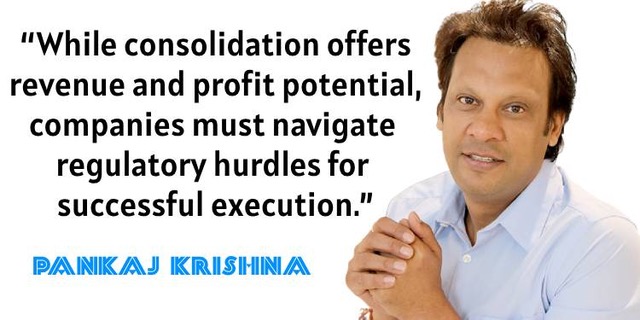 Apart from mass entertainment like Hindi GECs is it fair to say that other genres are shifting from TV to digital in terms of content consumption and revenue?
Apart from mass entertainment like Hindi GECs is it fair to say that other genres are shifting from TV to digital in terms of content consumption and revenue?
The content consumption landscape is evolving rapidly, with audiences increasingly gravitating towards digital platforms for diverse content beyond traditional mass entertainment like Hindi GECs. While TV remains dominant for mass entertainment, there is a notable shift to digital platforms for other genres in both consumption and revenue. Digital platforms offer a plethora of niche content spanning lifestyle, travel, food, sports, documentaries, and independent cinema, catering to varied audience interests.
This diversity, coupled with on-demand streaming convenience, attracts viewers who may not find such content on traditional TV. Personalisation algorithms enhance engagement by recommending tailored content, encouraging prolonged viewing. Innovative monetization models like SVOD, AVOD, and TVOD reshape revenue streams, offering flexibility for creators and viewers. Targeted advertising on digital platforms maximizes ad effectiveness, reaching specific audience segments with relevant content. Original content production drives growth, with streaming giants investing heavily across genres, attracting subscribers and ad revenues, positioning digital platforms as formidable competitors to traditional TV.
What role do you see A.I. playing in content creation?
A.I. is revolutionising content creation in the media and entertainment industry through several key roles:
Algorithms analyse user data to curate tailored content suggestions, enhancing user engagement. Technologies like NLP and NLG automate writing tasks, expediting content creation across formats. A.I. powered tools automate video editing tasks, improving workflow efficiency and productivity for editors. Analytics platforms use machine learning to analyze audience behavior and predict trends, guiding content strategy. It also aids in idea generation, concept development, and feedback provision, empowering creators to refine their content effectively.
Based on data from COTT what kinds of content work best on SVod that convinces people to pay in a price sensitive market?
Insights from COTT data reveal that specific content types drive significant engagement on SVOD platforms, especially in price-sensitive markets. Here is what stands out:
Well-produced series and movies with compelling storytelling and high production values attract subscribers. Investing in quality original content can drive subscriptions, even in price-sensitive markets. While popular genres like drama and comedy remain in demand, niche genres such as crime thrillers and documentaries also draw viewers. Offering a diverse range of content caters to varied audience interests. Access to regional and localized content is crucial for attracting subscribers.
Offering content in native languages and reflecting cultural identities helps SVOD platforms tap into underserved markets. Securing exclusive rights to blockbuster movies and popular series drives subscriber interest. Exclusive premieres create a sense of exclusivity, encouraging subscriptions. Effective content discovery mechanisms and personalised recommendations enhance user experience. Leveraging data analytics and AI-driven algorithms ensures tailored recommendations, boosting subscriber satisfaction and retention.
Is India primarily going to be about AVod or will SVod be significant?
India’s VOD landscape presents a blend of opportunities and challenges, with SVOD platforms gaining momentum alongside traditional AVOD services. Chrome DM sees the future of VOD in India as follows:
Rising internet penetration and smartphone adoption are fueling the growth of SVOD platforms. Offering ad-free access to premium content, SVOD services cater to viewers seeking quality and control over their entertainment experience. VOD platforms are adopting hybrid models, combining AVOD and SVOD elements. Freemium offerings, providing free and premium content with optional subscriptions, cater to diverse audience preferences and budget constraints.
Platforms are exploring innovative monetization strategies, including tiered subscriptions, pay-per-view, and branded content partnerships. Agile monetisation approaches will be crucial in India’s competitive VOD market. SVOD adoption is driven by regional content availability. Platforms offering diverse regional content in local languages tap into underserved markets and connect with a broader audience. Investments in regional content production and localization strengthen market position and audience engagement.
With the four big networks exiting Freedish is there room for new players to come into FTA? What is the growth potential of FTA?
The recent exits of major networks from FreeDish have reshaped India’s FTA television landscape, prompting discussions about its future and the potential for new players. Here’s Chrome DM’s perspective on the growth prospects and opportunities in this space:
While the departures may pose challenges initially, they also open doors for emerging broadcasters and content creators to enter the FTA segment. With strategic content, distribution partnerships, and business model innovation, newcomers can address diverse viewer needs and establish a presence in the market. Fragmentation in the television landscape allows niche FTA channels to thrive. New players can target specific audience segments, such as regional viewers or niche interest groups, by offering tailored content and targeted marketing. This strategy enables differentiation and audience engagement.
Success in the competitive FTA market hinges on differentiation. New entrants can stand out by delivering innovative content formats, engaging storytelling, and localized programming. Leveraging emerging distribution platforms like DTT and OTT expands reach and accessibility, driving growth. Strategic alliances with content producers, advertisers, and distribution platforms are vital for new entrants to overcome entry barriers. Collaborations provide access to resources, expertise, and networks, accelerating growth and establishing a competitive edge.
Despite challenges, the FTA segment holds significant growth potential in India. With a large and diverse audience, increasing TV penetration, and demand for localised content, FTA channels can attract viewers and generate revenue through targeted advertising and sponsorships.
What is your take on media consolidation in terms of getting more revenue and increasing profit? Disney-star and Viacom18 are coming together.
Media consolidation, exemplified by potential mergers like Disney-Star and Viacom18, holds profound implications for revenue and profitability in the industry. Chrome DM sees it this way:
Consolidation allows companies to merge resources and content libraries, driving efficiency and bolstering bargaining power with advertisers and distributors. This leads to enhanced revenue potential and improved profit margins. Merging diverse content portfolios enables cross-promotion and innovative programming, broadening audience appeal. Integrated capabilities in content creation, distribution, and monetisation unlock new revenue streams and market opportunities. Consolidated entities gain market dominance, expanding reach, and influence.
This translates into higher revenues from advertising, licensing, and subscriptions, amplifying overall profitability. Merged companies forge alliances with stakeholders, driving innovation and revenue growth. Leveraging synergies, they explore new markets, revenue streams, and navigate industry challenges effectively. While promising, media consolidation attracts regulatory scrutiny. Compliance with regulations is crucial to safeguard consumer interests, promote competition, and ensure diversity in media ownership. Therefore, while consolidation offers revenue and profit potential, companies must navigate regulatory hurdles for successful execution.

